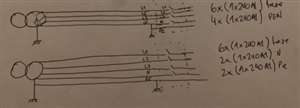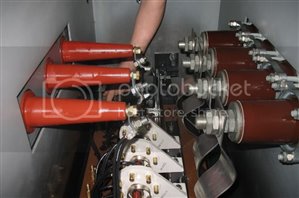Im having some doubts regarding where I should ground the Neutral and why ?
This is a new installation which is in an industry that will have its own substation 15/0.4Kv with a transformer of 1250KVA 15/0.4KV DY.
This substation will only feed the MainCircuitBreaker of the plant which is located 80meters away from the substation, there will be no other consumers from this substation/transformer.
The cables are already buried. They will be 6 cables per phase alluminum 240mm2 and 4 other cables 240mm2 alluminum also that could be used for neutral or PE or PEN depending...
Should I ground the neutral the the transformer ? at the income of the LV MCB ? at both sides ? run only a PEN from substation or run Neutral and PE separate ?
These are the possible options i was considering.. and was hoping some of you guys give your opinions.
Remember the distance between the TX and LV main panel is 80m

In the picture the PEN in option 1 and earth in option 2 is grounded at both sides (transofmer and LV mainboard)
The other options would be as 1) and 2) but grounding only at one of those sides... (those would be pure TNS or TNCS)
Whats your opinions ?!
Thanks in advance!!

